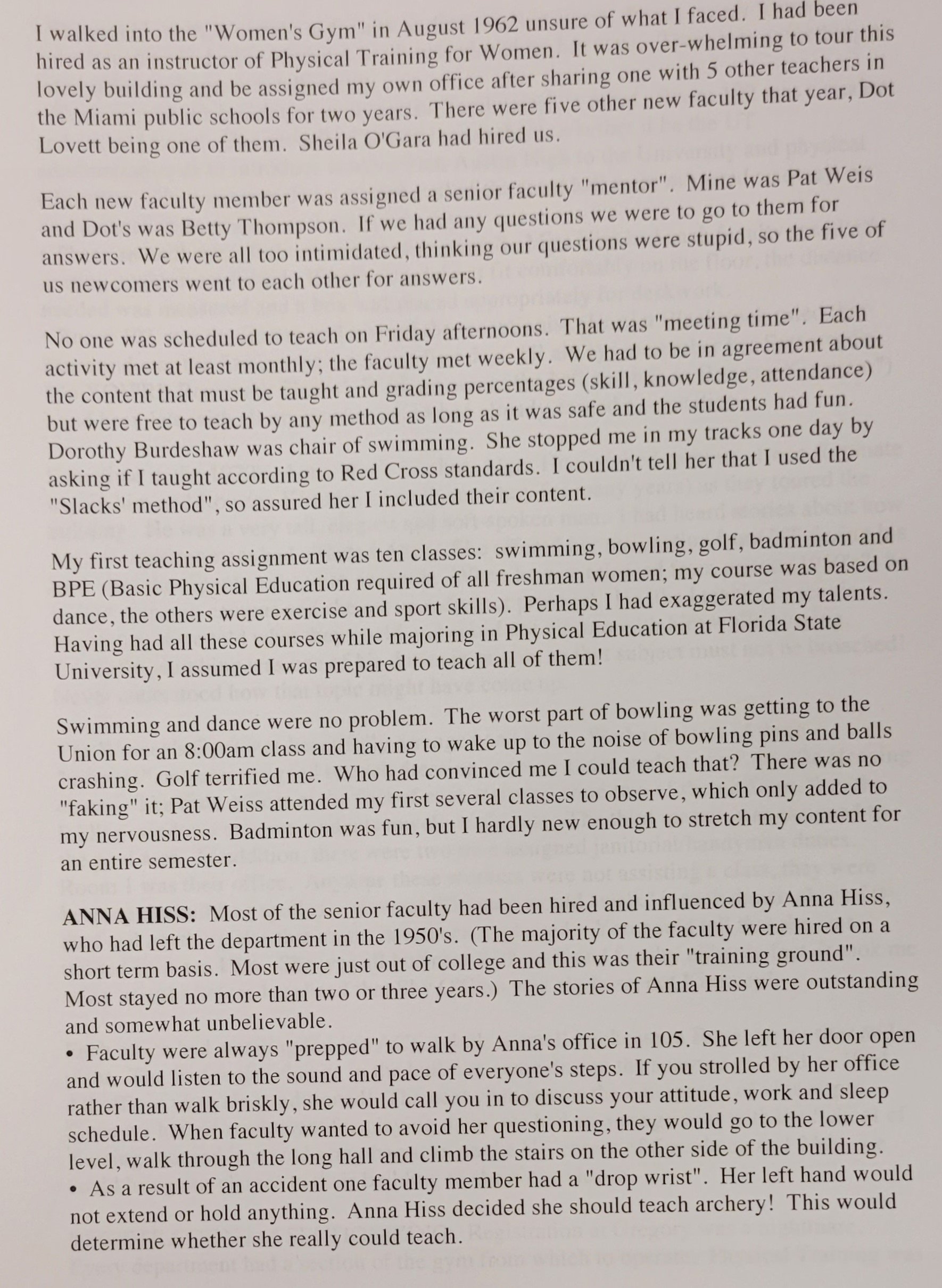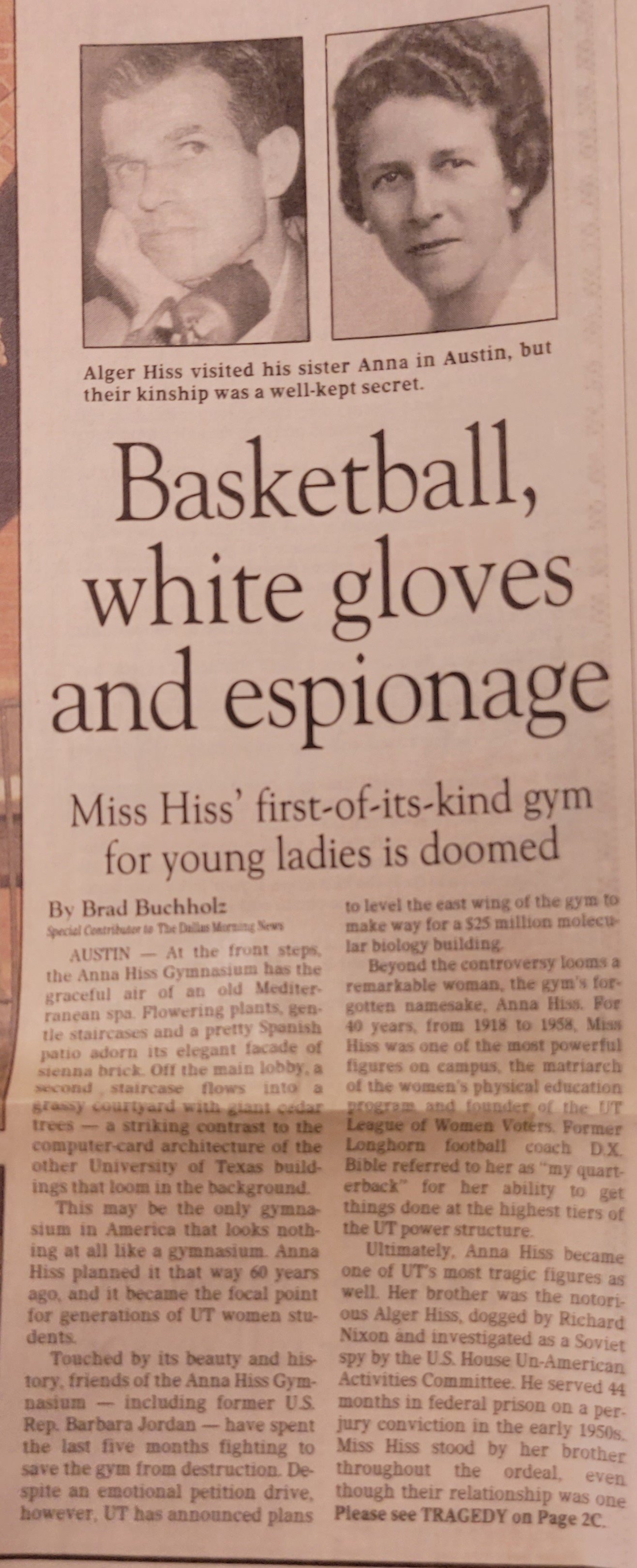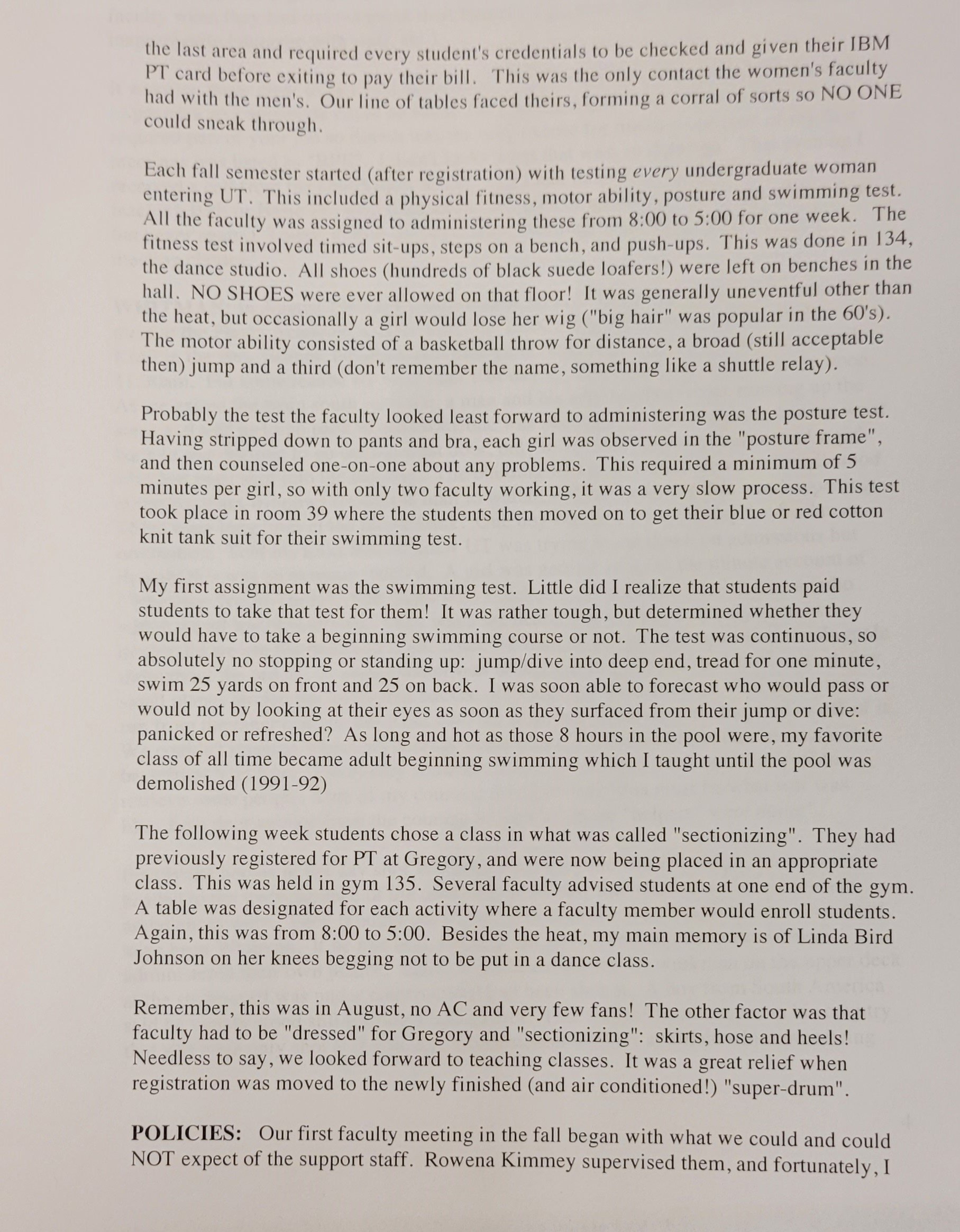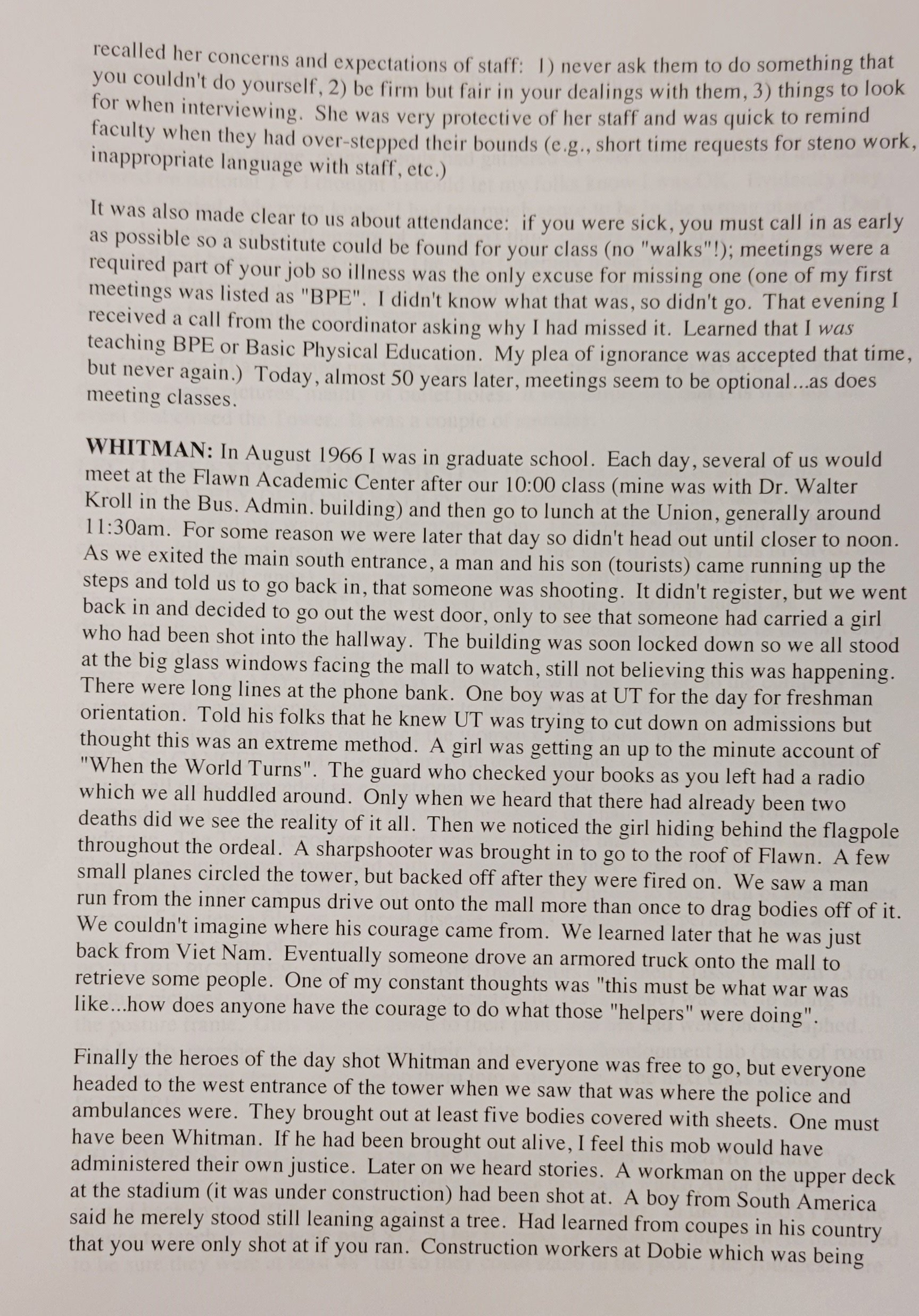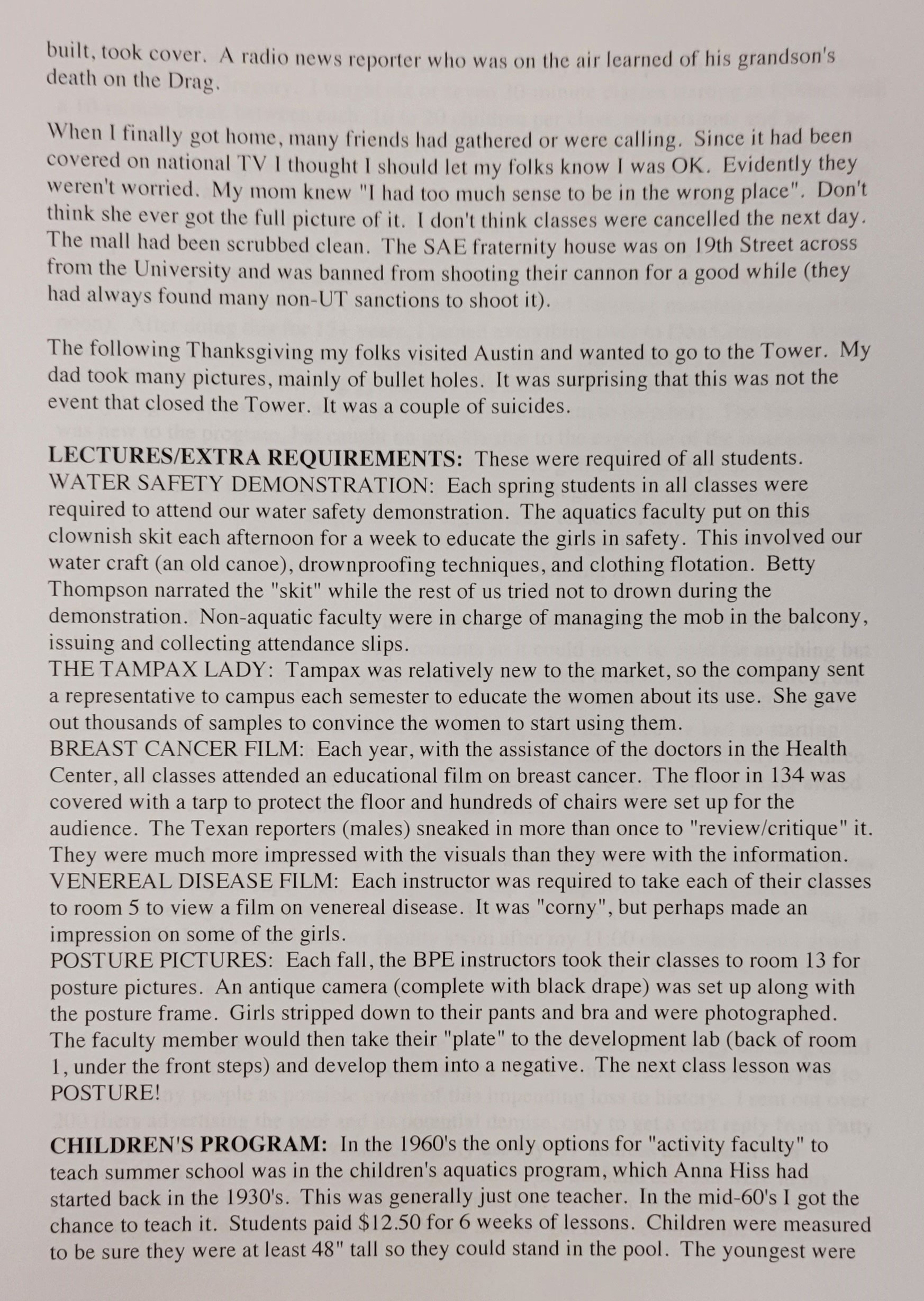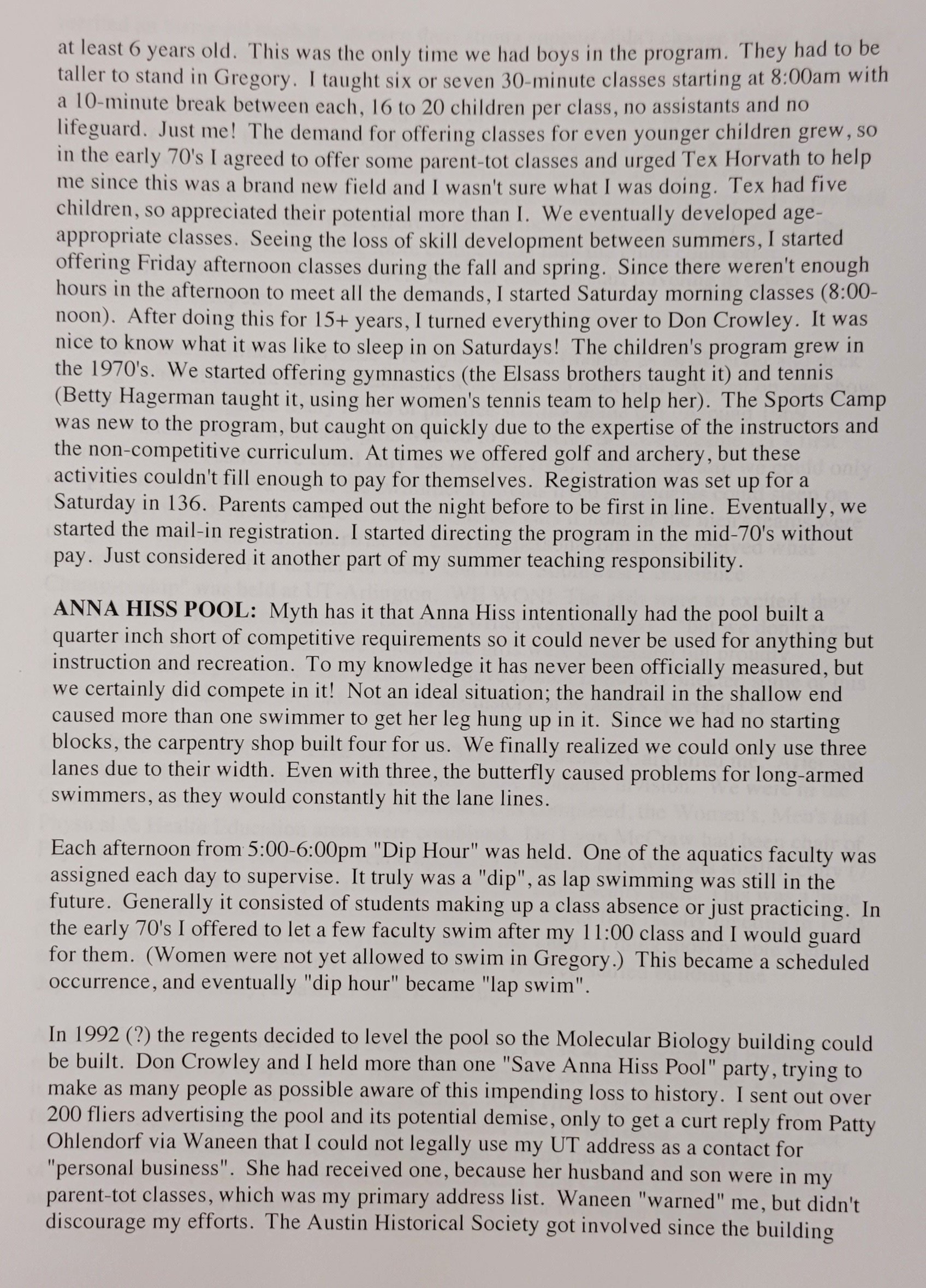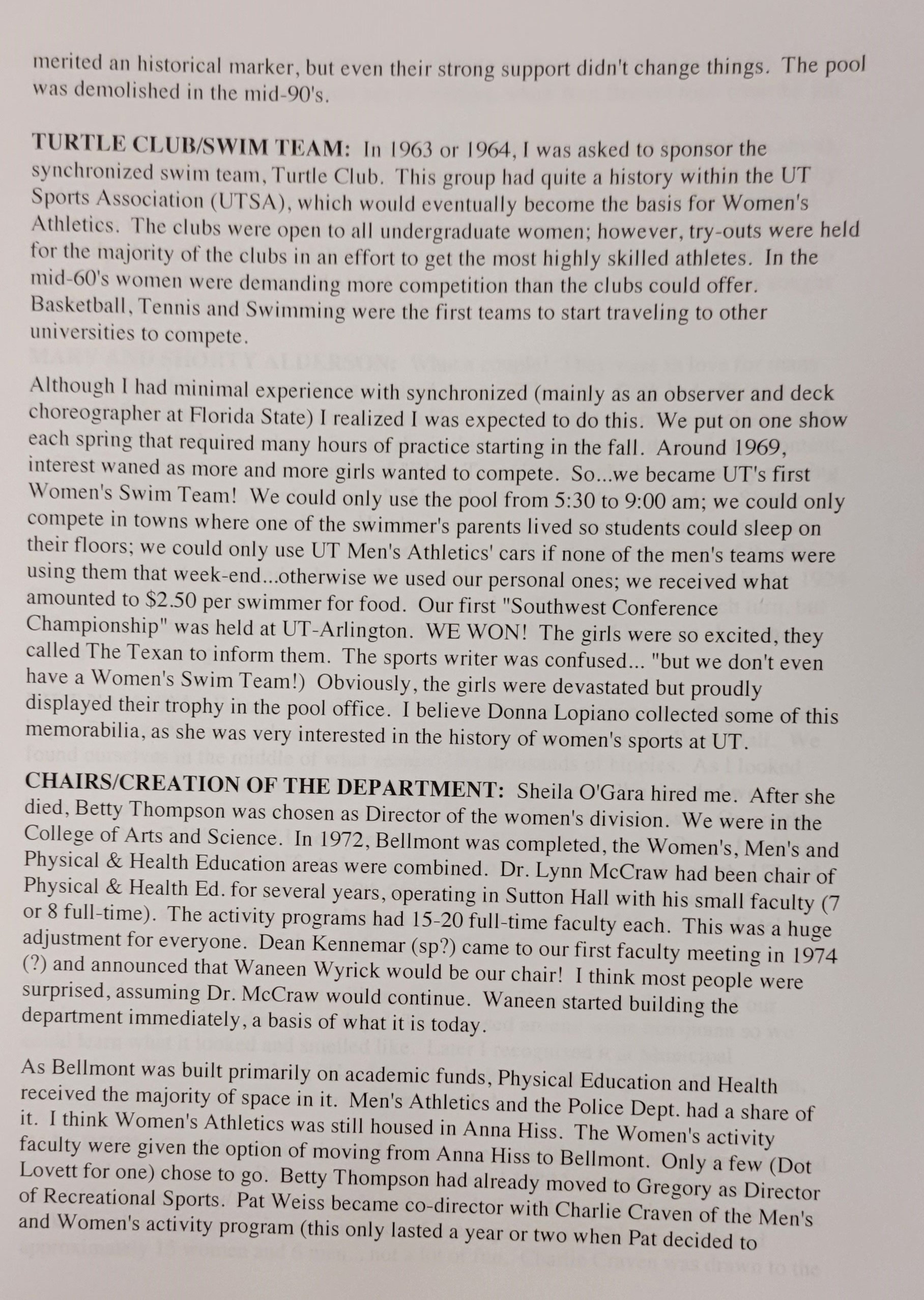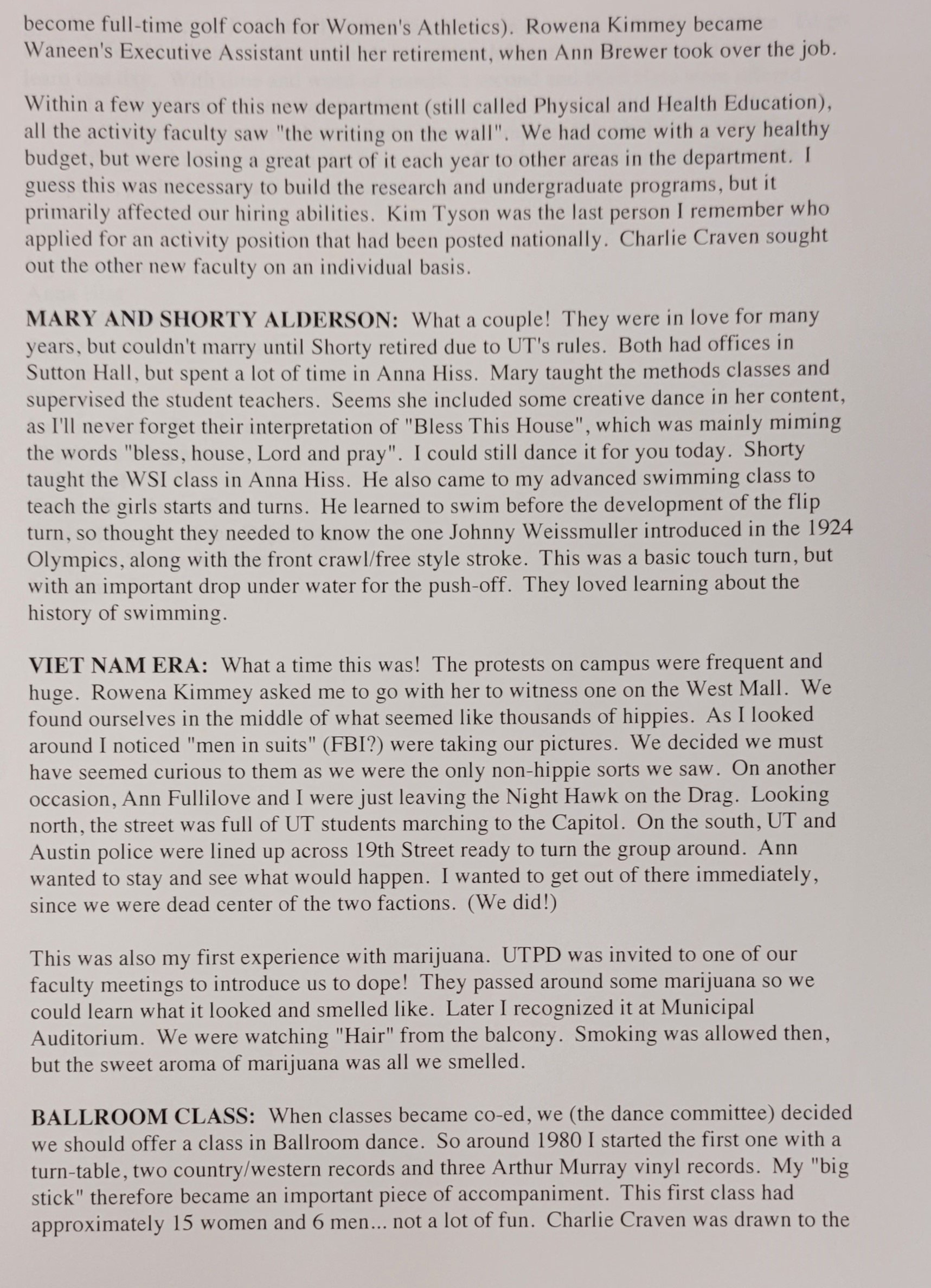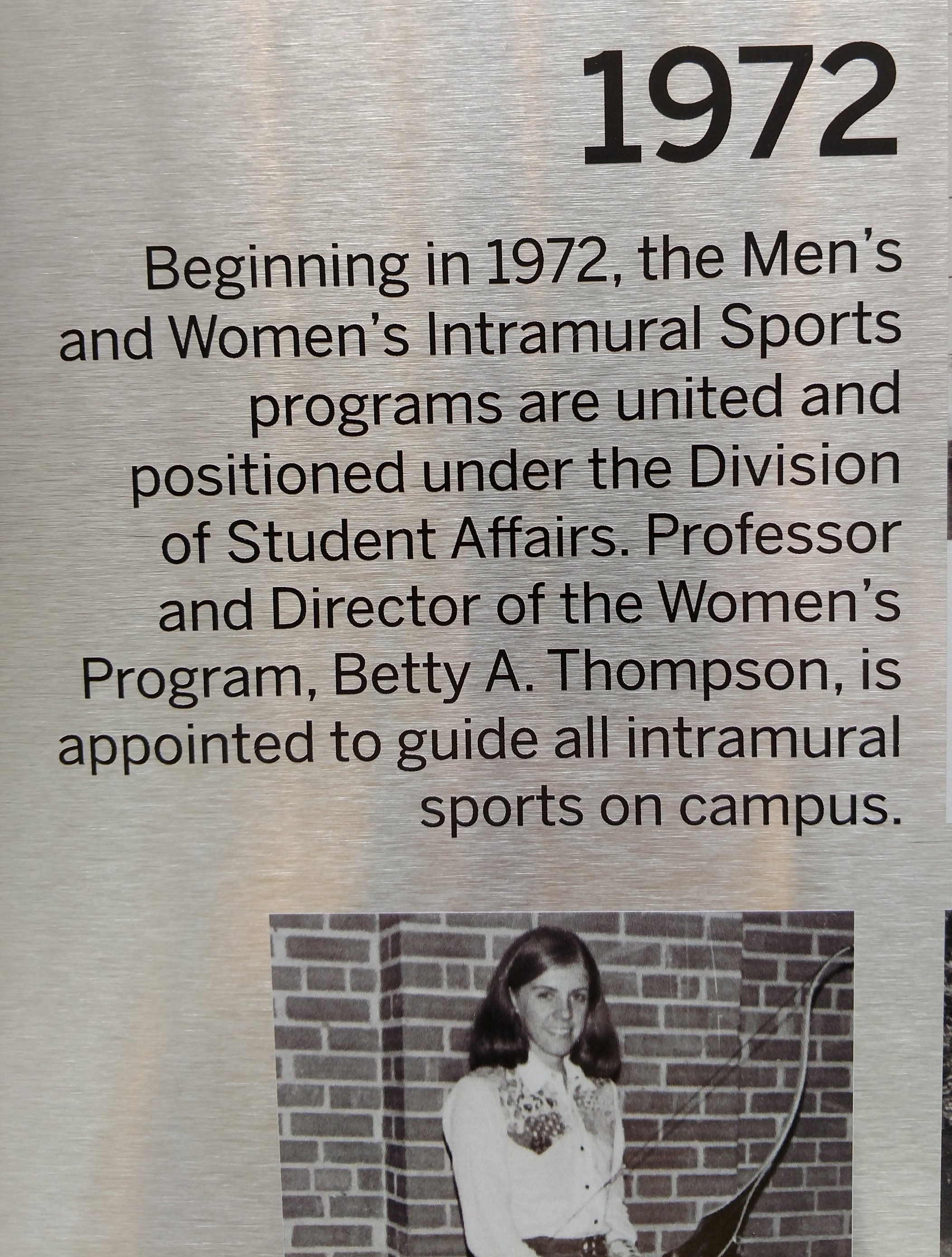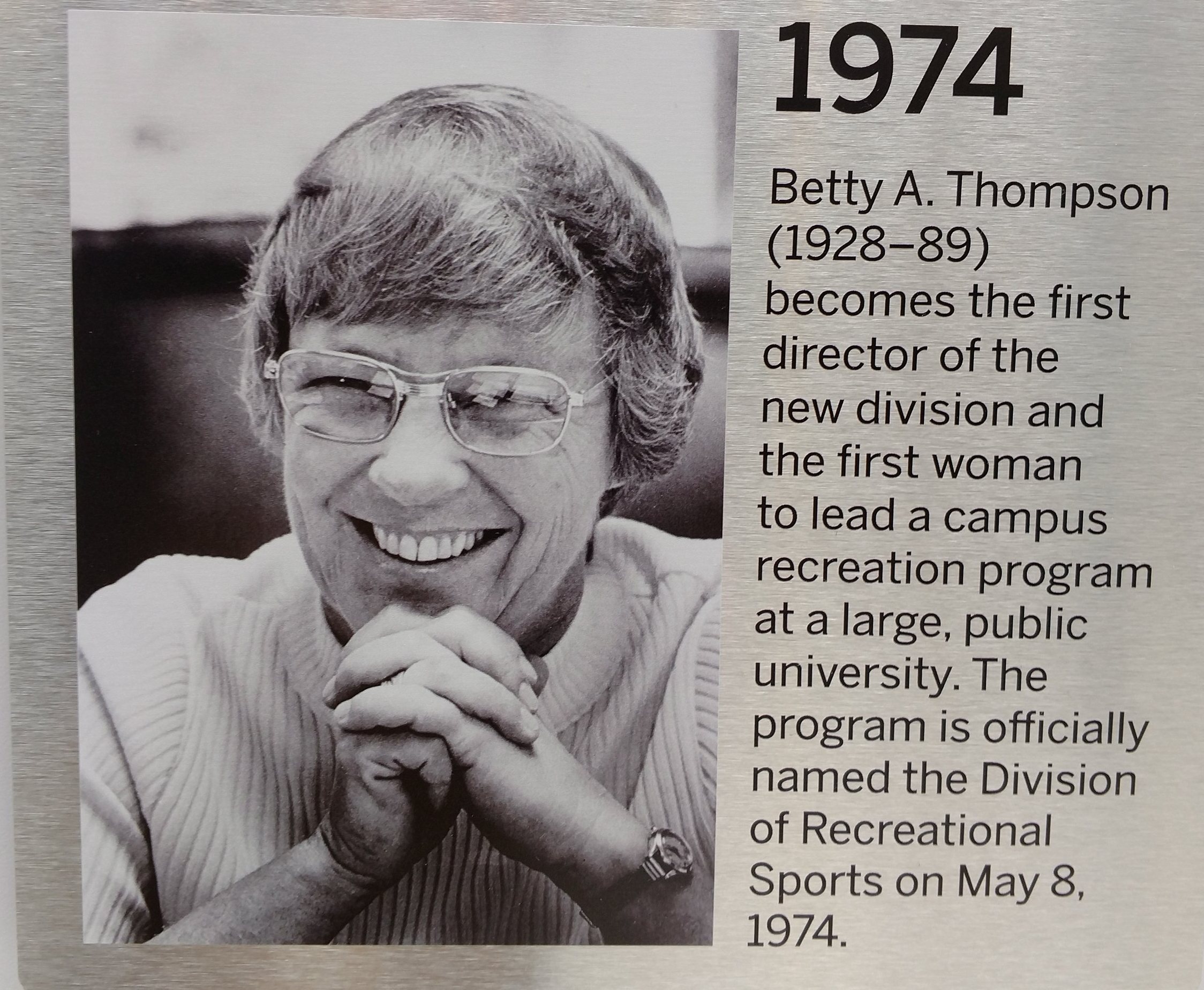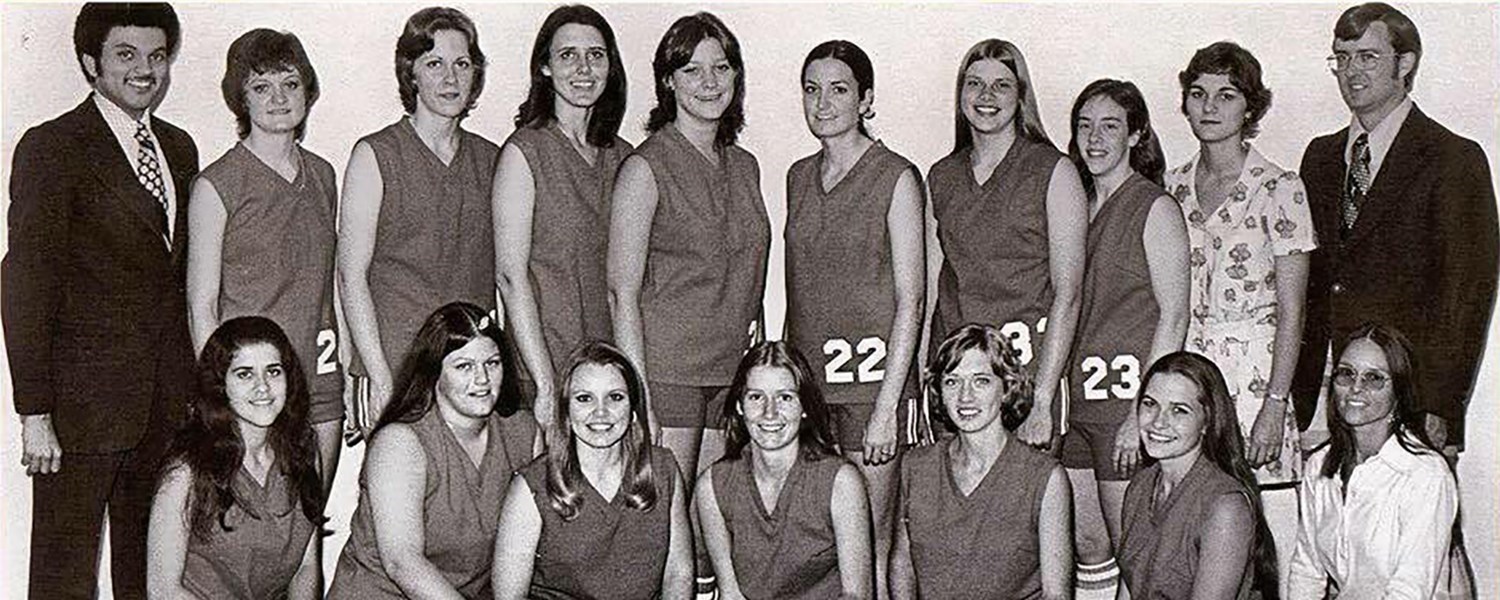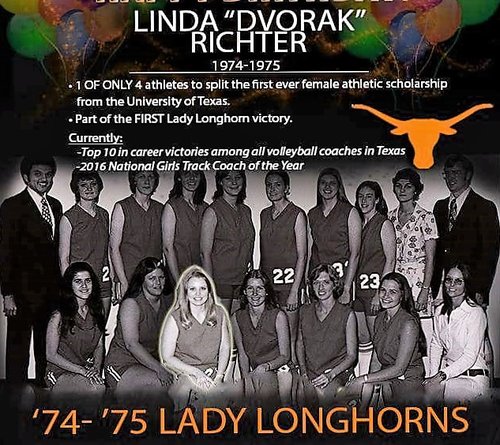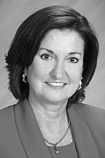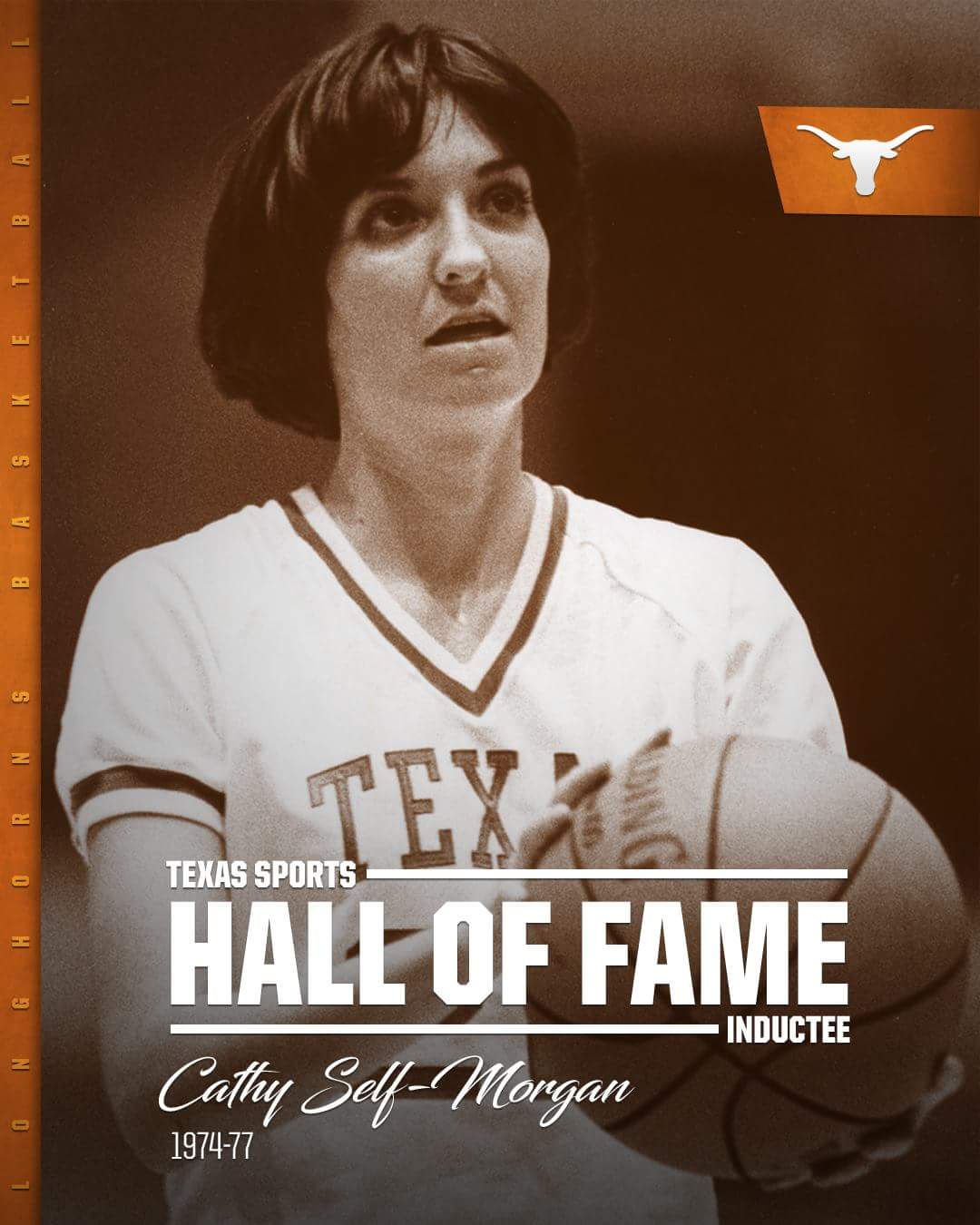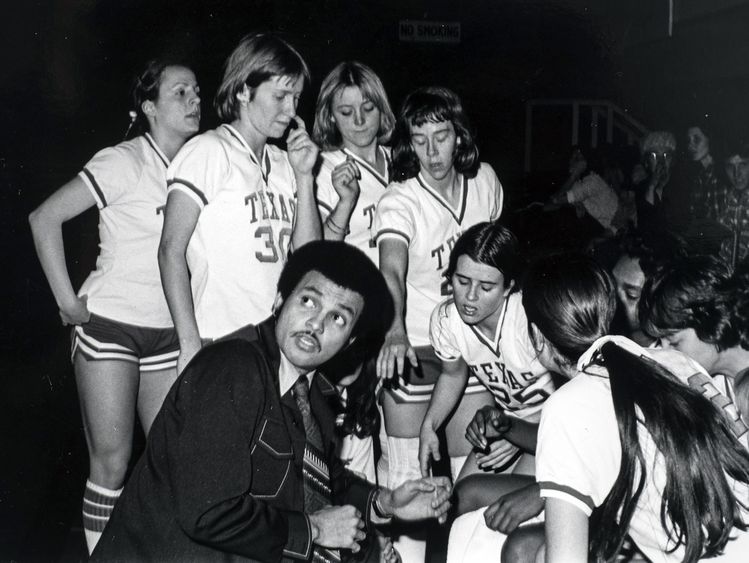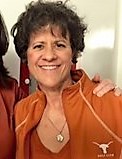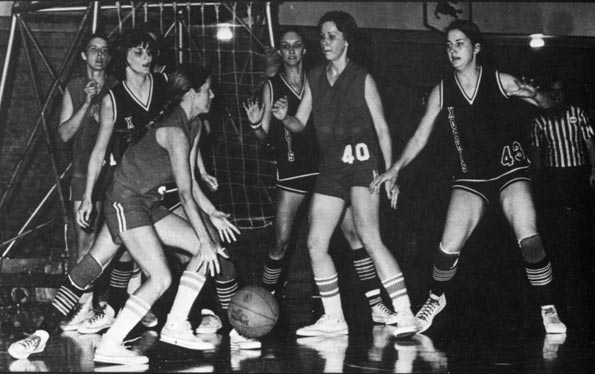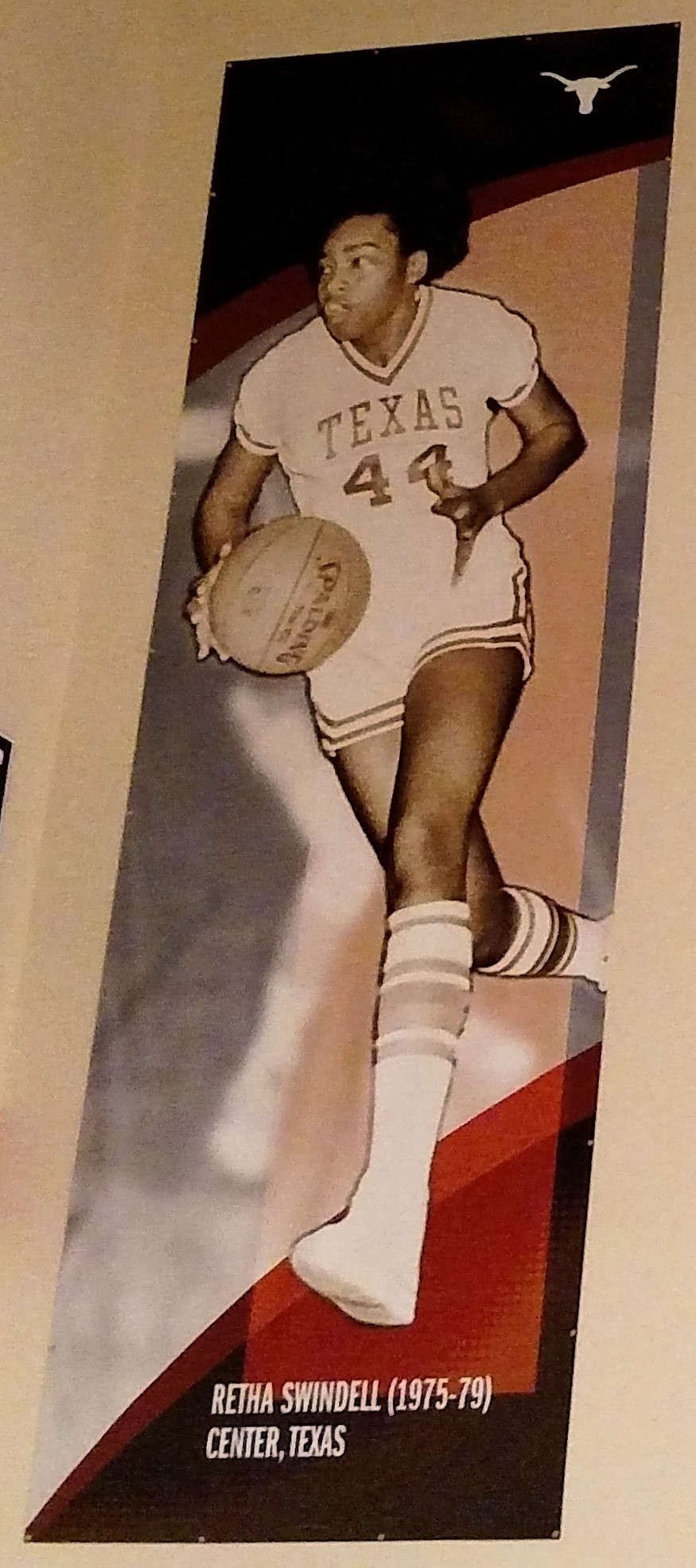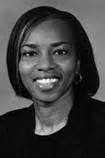FOR INFORMATION ON WOMEN'S BASKETBALL before 1957 PLEASE VISIT
https://texas-lsn.squarespace.com/19211957-anna-hiss, or
https://texas-lsn.squarespace.com/1896-1921 , or
https://texas-lsn.squarespace.com/the-importance-of-the-1940s-for-womens-sports
Table of Contents
1957- Anna Hiss retires as the women’s director - Women’s sports history 1957-1961
1962-1974 BETTY THOMPSON transitions women's sports from Hiss to Lopiano.
BETTY THOMPSON "NOR HELL A FURY LIKE A WOMAN SCORNED"
1975 -1976 Coach Page
#1 1957-1975 - The Struggle to reach critical mass for a successful women's intercollegiate sports at texas begins.
1957-1961 Josephine Chapman replaces Anna Hiss as Women's Director-( Pending more info.)
1961 -1968 Sheila "Shy" O'Gara is the Women's director- pending more info.
O'Gara takes over the Directorship of the department following Hiss’s core values.
1966-1967 Basketball Coach June Walker
Basketball and volleyball are granted intercollegiate status. The Club program under UTSA is disbanded. In 1966 Coach June Walker has try-outs for the basketball team. The games are played in the women's Gym. There were three coaches between 1966 and 1973 - Dalton, Hansen, and Page.
In 1901 the men's basketball game was considered too rough for women, so different rules were established. The players were assigned to one of three sections, and once a player is designated a position, she cannot move from that section. Only three dribbles per individual are allowed, and the player can only hold the ball for 3 seconds. Full court sprints or fast breaks were not part of the women's game.
These rules were implemented to reduce too much exertion, which in the early 1900s many thought could "break something" that might hurt a player's chance of being a mother. It is thought that too much exercise "weakened" the womanly functions. Dr. William Howard cautions, "no girl with a nervous temperament should go into any athletic contest" because sports place a strain on the nervous system.
Topping the charts is respect- an appropriate song for the future of women's sports.
1962-1979 BETTY THOMPSON transitions women's sports from Hiss to Lopiano. 1962 to the advent of Title IX.
1962- A story about Women’s Sports in the 1960’s by Instructor of Physical Training Rosemary Stacks. She discusses Anna Hiss, Algier Hiss, Sheila O’Gara, Betty Thompson, Pat Weis, the Vietnam war, Tampax, Whitman, and other subjects that are now part of Longhorn Sports and U.T. History.
Use the arrows to scroll right and left
#2 1970’s BETTY THOMPSON transitions women's sports from Hiss to Lopiano.
Tessa Nichols stated that Betty Thompson listened to the women student-athletes who wanted an intercollegiate sports model that copied the men's program over the wish of the key U.T. administrators who disdained the male sports mode.1967-1968 badminton, golf, and gymnastics were formalized as intercollegiate sports1968-1969 tennis is recognized as an intercollegiate sport.1969-1970 swimming becomes an intercollegiate sport. Coach Dalton is the coach of the Basketball team in 1969, 1970, and 1971 the total annual budget for the seven varsity women's intercollegiate teams is $3000.
1971 Basketball Coach Dalton -pending more info.
"Girl rules" for women's basketball are abolished and replaced with "boy rules."
1972- Basketball Coach Barbara Hansen Pending photos and content
The basketball team reaches the regional AIAW tournament but can not participate due to a lack of funds.
Title IX becomes law.
Top of the chart in 1972 is Stevie Wonder's song Superstition
1973-1974 A very important year for Longhorn intercollegiate women's sports
University of Texas President Stephen H. Spurr requested information about Women's Sports status from several prominent universities' Chancellors. The responses varied
One major university chose not to pursue a women's program;
another had no problem with supporting the women's program;
another said the intramurals should be adequate enough for women;
one said, "we are looking into the problem"” and finally
Michigan chose to develop a women's intercollegiate program that was " strictly amateur," which meant no recruiting and no scholarships. The committee at the University of Michigan was concerned that the men's intercollegiate was too "commercial" and did not want to repeat that mistake with the Women's sports program.
Donna Lopiano agreed with the University of Michigan and chose to establish a women's intercollegiate program based on education first and sports second. The University of Texas would not recruit or offer scholarships to women.
The first AIAW (Association For Intercollegiate Athletics for Women ) Delegate Assembly was held in Overland Park, Kansas from November 4th through the 6th of 1973 .
The National championship sports for 1973- 1974 included"
Badminton
Basketball
Golf
Gymnastics
Swimming and Diving
Track and Field
Volleyball
Starting in the 1960’s tennis transitioned from a game for the affluent to an aspiring class of women who were from working and lower-middle-class backgrounds. Women who were socially marginalized. Great women's tennis players were learning the game on the public courts and started a dialogue in the nation about women and sports. Unfortunately, unlike men’s pro circuit with a payday, women had none. If they did receive a check, it was laughable even for that period.
1975 Front row- Kurz, Bryant, Phillips, Macken, Walker, Brownstein- back row- Nixon, Murphy, Govaars, Tredennick, Wilkins, Cowden, Coach Hagerman
#3 BETTY THOMPSON "NOR HELL A FURY LIKE A WOMAN SCORNED"
Betty Thompson acts as a transition catalyst for Longhorn women's sports from the Hiss doctrine to the Lopiano Renaissance.
This comment was sent in a letter to the UT President Spurr from Betty Thompson after he rejected the special committee’s recommendation in the Athletic Council to merge the women's and men's programs into one athletic department. Instead, the Athletic Council suggested a "separate and distinct" department for intercollegiate athletics for women. On the surface, this decision seems to be positive for the independence of women's sports from men's sports, but in reality, this decision made the success of the new intercollegiate women's athletic department problematic. Starting from scratch to fund the Women's Athletic department reduced the chances of building a successful women's program. Betty Thompson knew that success would require tremendous sacrifices from both the players and coaches.
A link to Betty Thompson’s story of perseverance. https://texas-lsn.squarespace.com/betty-thompson
Betty Thompson accepted the job as the interim athletic director for women despite all the perils that lied ahead for women's intercollegiate sports at Texas. One of Betty's first jobs was to formulate the first budget request for the new Athletic department. By her estimates, the women's program would need $94,850 for the first year. That budget request was less than the football program's annual phone bill, but it was rejected and reduced to $50,000 with supplemental funds added from a voluntary student fee for women's athletics.
In addition to intercollegiate sports interim Woman's Athletic Director, in 1973, Betty Thompson merged men and women intramurals into the "Division of Recreational Sports" with Betty Thompson as Director.
More on Betty Thompson at the link below.
https://texas-lsn.squarespace.com/betty-thompson
Betty Thompson's first two hires for head coaches of varsity sports were Rodney Page for basketball and Pat Patterson for women's swimming.
On December 1, 1974, Betty Thompson sent out a letter asking for applicants to fill the A.D. of the University of Texas Intercollegiate Athletics for Women. The starting salary was $18,000. Illinois State, Ball State, Southern Illinois, The University of Massachusetts, and Indiana State posted the job opportunity.
Cathy Self Morgan entered The Longhorn Hall of Honor in 2004. She was one of Rodney Page recruits in the first years (mid-70's) of Longhorn women's basketball. The video below tells her compelling story after leaving Texas.
#4 1975 -1976 Coach Page
In 1975 the United Nations declared International Women’s Year. It was a platform to advocate for women’s rights. By 1977 20,000 women congregated in Houston to attend the National Women’s Conference and set in motion the Title IX agenda.
1975 17-10 Record Coach Page 1975
Texas receives the Babe Didrikson Award from 1977- 1982 for the best overall women's athletic program.
Scholarships are offered for the first time.
The team makes their first plane trip.
Team advances to state AIAW tournament
On June 13, 1975, Betty Thompson wrote a letter to President Lorene Rogers expressing her concern about an NCAA report that could undermine the AIAW's ability to continue as a rule-making body for women intercollegiate sports.
Betty Thompson moved all administrative functions of the Division of Recreational Sport from Anna Hiss Gym to Gregory Gym Annex. Betty Thompson, as Director, won the Babe Didrikson awards for Best Athletic Department in 1975 and 1976.
Texas also receives the Babe Didrikson Award from 1977- 1982 for the best overall women's athletic program.
Title IX gives women equal opportunity but not comparable amenities. Budgets controlled the amenities, and the women's programs had very few resources. During road games, the team often stayed at a family member's house, sleeping on the floors and couches.
The players sometimes had to sleep three to a bed. Pam Hoerster said, "We had to buy our shoes and parents fed us."
Pam participated in the program's first-ever women's basketball team in 1974-75. Pam's teams had to fight for recognition and accommodations.
Coach Page even had his mother cook a traditional southern meal of red beans and rice, cornbread, and greens for the team when the Longhorns visited his hometown in Houston.
https://texas-lsn.squarespace.com/coach-rodney-page-1973-1976
Texas women start to practice and play in the Gregory Gym.
Coach Page, with the support of Leon Black -the head coach of the men's basketball team- moved women's basketball games from Gregory Gym annex to Gregory Gym.
Coach Black also shared some of his budget to buy supplies and equipment for the women and permitted the women's basketball team to use the trainers for games. He also helped promote the women's basketball program by allowing them to play before the men's game. These kinds of gestures increased attendance at the Lady Longhorn games, which heightened the players.
The University of Texas President Stephen Spurr announces the beginning of the Women's Athletic Department with a budget of $50,000, replacing the UT Sports Association.
Click on site below to learn more about Coach Page
http://www.espn.com/video/clip?id=18788073
Picture of the first women's basketball game under Title IX is to the left.
1976 21-7 Record- Coach Page LAST YEAR
Donna Lopiano is hired as the first Women's Athletic Director. The History of Lopiano's reign as Women's Athletic Director is chronicled in the "Pioneer" page under "Donna Lopiano" and "Athletic Director. Please click on https://texas-lsn.squarespace.com/donna-lopiano to learn more about Donna Lopiano.
Retha Swindell is the first Texas Woman's black player; first Longhorn All American in Basketball, and first black captain.



